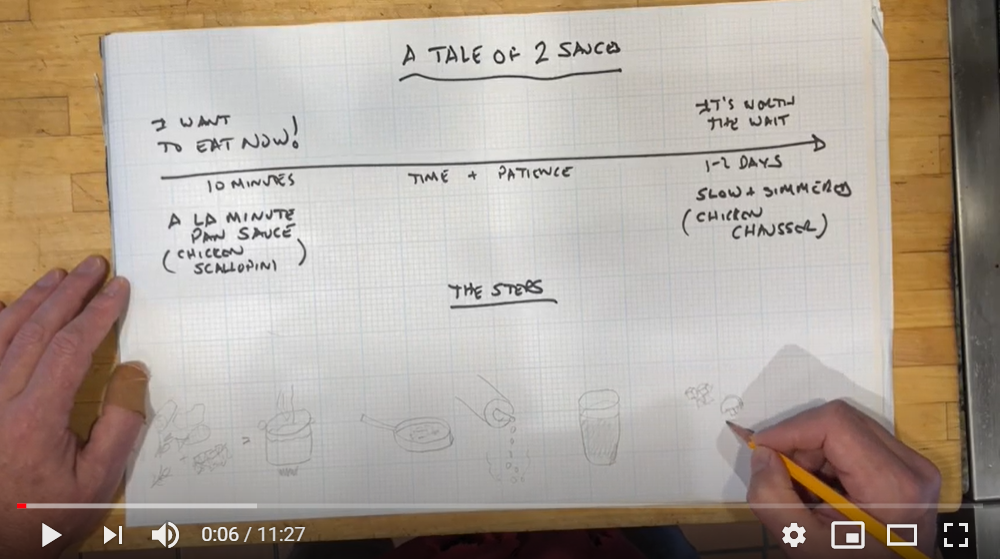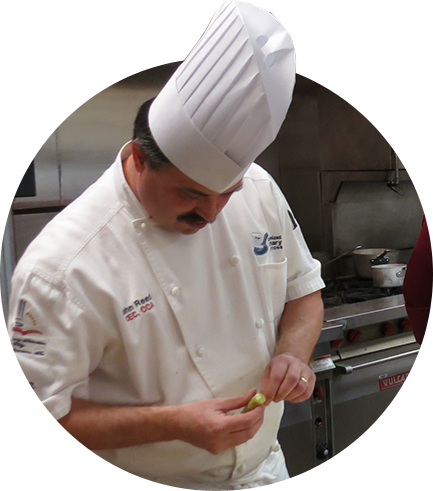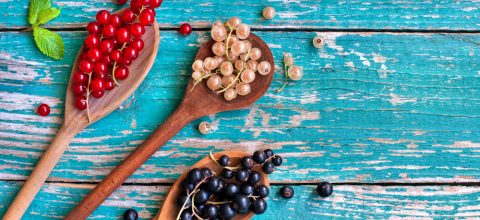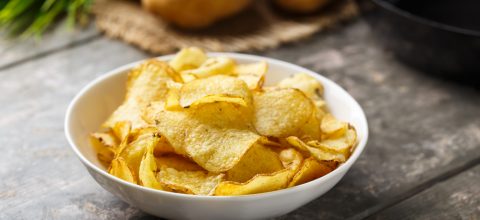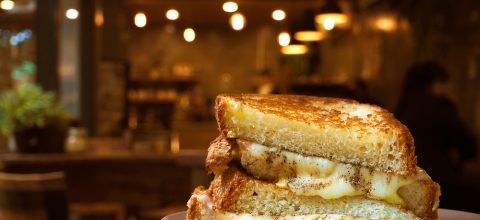October 2020 · Chef John Reed, CEC, CCA
I just wanted to start out by thanking those who have taken a short time out of their information-overloaded days and spent time watching the digital edition of the newsletter. I have begun to include little segments called Blueprint Techniques.
What is a Blueprint Technique? Many years ago, I started to pen a book about how we need to change the way we teach cooking. I feel now, as I did back then, that our traditional method of culinary education in the US-and most of Europe as well-is too focused on traditional cooking methods and recipes rooted in European classical cooking. I, for one, have been reinforcing and preaching the techniques of sauteing, braising and roasting for my whole career. Blueprint techniques are useable processes that you can use to elevate your cooking. Instead of focusing on very methodical techniques, we will show you how to look at three or four major processes/concepts that are not limited to Western cooking methods but include global ideas and food handling techniques that don’t necessarily rely on a pan and a stove.
Most of the cooking techniques we are taught are mainly hot processes. We are first taught to cook by making a recipe that fits a cooking process. The recipe is designed with items that are best suited for the process. This is how teaching is passed on.
We don’t teach ingredients as the foundation of cuisine. Ingredients are the starting point. When we write restaurant menus, it’s generally, “We need some sautéed items, some fried, some grilled and some cold.” We should be thinking, “What’s in season, where is it in the lifespan of the season and what range of processes can we use to best highlight its perfection, improve its flavor or add its imperfections to other ingredients to make something special?” If you want a great example of this, look at the use of green, un-ripe strawberries in modern cuisine.
When you understand the ingredient, then you ask yourself what you could do to this to achieve the resulting flavors you are looking for in your food. This is when you look at all of the global techniques that can achieve the same result. This allows your cooking to grow exponentially.
For example, the sauté. When we think of restaurants, we think high heat, quickly cooked. This is easily taught, but what we don’t fundamentally discuss is why we sauté. The key to good sauteing is the understanding of the science of enzymatic and non-enzymatic browning and using those principles to create the foundations of flavor, either on the product or the flavor that is created on the surface of the pan itself. In thinking this way, sauteing is actually a technique that relies on enzymatic browning and reduction as the process.
One of the key concepts that is for the most part lost in the world of non-stick pans is the skill of controlling this browning process on the surface of the pan and the skill in deglazing a pan to capture those unique flavors formed from properly sautéed chicken.
So in this next episode, I am going to introduce the fundamentals of deglazing and reduction in sauce-making that is not just limited to chicken scallopini with lemon and capers.
– Chef John Reed, CEC, CCA

